 W
WThe Siege of Akasaka was one of the earlier battles of the Genkō War between the figurehead Emperor Godaigo and the largely Hōjō controlled Kamakura shogunate during the final years of the Kamakura period in Japan. The battle in question was fought at Shimo Akasaka-jō (下赤坂城), or, a fortress built upon Mount Yoshino near modern-day Osaka in the former Kawachi Province in Osaka Prefecture.
 W
WThe Siege of Busanjin was a battle fought at Busan between Japanese and Korean forces on April 14, 1592. The attacks on Busan and the neighboring fort of Dadaejin were the first battles of the Japanese invasions of Korea (1592–98).
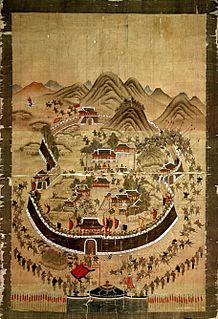 W
WThe Siege of Dongnae was a siege that occurred on April 15, 1592 during the Japanese invasions of Korea (1592–98). It resulted in the capture of Dongnae, a mountain castle on the way to Hanseong (Seoul), by the Japanese.
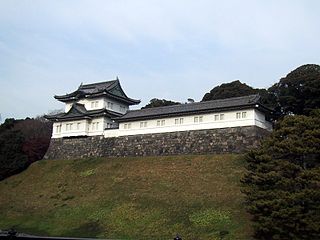 W
WIn the 1524 Siege of Edo, also known as the Battle of Takanawahara (高輪原の戦い), the Hōjō, led by Hōjō Ujitsuna, besieged Edo castle, which was held by Uesugi Tomooki. Though Edo has since become the Japanese metropolis of Tokyo, it was then a more or less insignificant fishing village in the Kantō region.
 W
WThe Fall of Edo , also known as Edojō Akewatashi (江戸城明け渡し) and Edo Muketsu Kaijō (江戸無血開城), took place in May and July 1868, when the Japanese capital of Edo, controlled by the Tokugawa shogunate, fell to forces favorable to the restoration of Emperor Meiji during the Boshin War.
 W
WThe siege of Fushimi was a crucial battle in the series leading up to the decisive Battle of Sekigahara which ended Japan's Sengoku period. Fushimi Castle was defended by a force loyal to Tokugawa Ieyasu's Eastern army, led by Torii Mototada. Knowing of his inevitable defeat, Torii's sacrifice diverted Ishida Mitsunari's attention, and part of his Western army, away from his Nakasendō fortresses, which were attacked by Tokugawa during the siege of Fushimi. Ultimately, the castle fell, but served a crucial role in allowing for greater strategic victories by Tokugawa.
 W
WThe Siege of Inabayama Castle of 1567 was the final battle in Oda Nobunaga's campaign to defeat the Saitō clan in their mountaintop castle and conquer Mino Province, Japan.
 W
WThe Ishiyama Hongan-ji War , taking place from 1570 to 1580 in Sengoku period Japan, was a ten-year campaign by lord Oda Nobunaga against a network of fortifications, temples, and communities belonging to the Ikkō-ikki, a powerful faction of Jōdo Shinshū Buddhist monks and peasants opposed to the rule of the samurai class. It centered on attempts to take down the Ikki's central base, the cathedral fortress of Ishiyama Hongan-ji, in what is today the city of Osaka. While Nobunaga and his allies led attacks on Ikki communities and fortifications in the nearby provinces, weakening the Hongan-ji's support structure, elements of his army remained camped outside the Hongan-ji, blocking supplies to the fortress and serving as scouts.
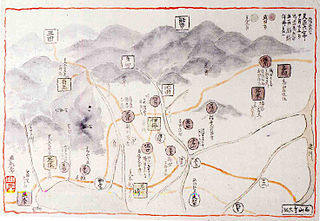 W
WThe second siege of Itami Castle (伊丹城の戦い), also called the siege of Arioka Castle (有岡城の戦い) during the Sengoku period of Japanese history, occurred in 1579, five years after it was seized by Oda Nobunaga from a lord named Itami, and entrusted to Araki Murashige.
 W
WThe Siege of Jinju was one of two battles during the Japanese invasions of Korea – the first in 1592, and the second in 1593. The first besiege attempt by the Japanese failed, leaving the Koreans holding the castle. The second siege of Jinju was successful, and it fell to the Japanese.
 W
WThe 1331 siege of Kasagi was among the first battles of the Genkō War, which brought an end to Japan's Kamakura period. Emperor Go-Daigo, who had been plotting against the shogunate and the Hōjō clan regents, had hidden the Japanese imperial regalia in Kasagi-dera, a fortified Buddhist temple, atop Kasagiyama, just outside Kyoto, and was secretly raising an army from there.
 W
WThe 1614 battle of the Kizugawa(木津川の戦い) was one of a number of battles surrounding the siege of Osaka, in which the Tokugawa shogunate destroyed the Toyotomi clan, the last major opposition to its control of Japan.
 W
WThe Kuromaru (黒丸), or "Black Fortress", was a fortress of the Kanrei Shiba Takatsune located in Echizen Province in the Hokuriku region of Japan. It was attacked twice during the Nanboku-chō Wars of the 14th century, during which it was likely both built and destroyed.
 W
WThe siege of Miki (三木合戦) lasted from 1578 to 1580. Toyotomi Hideyoshi took Miki Castle of Harima Province, located in what is now Miki, Hyōgo, Japan, from Bessho Nagaharu, an ally of the Mōri clan.
 W
WThe Siege of Moji was a siege in 1561 against the castle of Moji in Japan. The castle belonged to the Mōri clan, whose capital was the city of Yamaguchi.
 W
WThe Siege of Mount Hiei took place in 1571 and was a battle between the warlord Oda Nobunaga and the sōhei of the monasteries of Mount Hiei, north of the capital city Kyoto, western Japan.
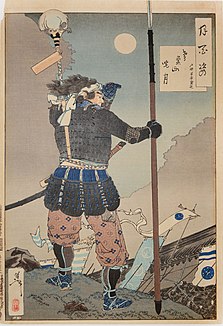 W
WThe Battle of Nagashino took place in 1575 near Nagashino Castle on the plain of Shitarabara in the Mikawa Province of Japan. Takeda Katsuyori attacked the castle when Okudaira Sadamasa rejoined the Tokugawa, and when his original plot with Oga Yashiro for taking Okazaki Castle, the capital of Mikawa, was discovered.
 W
WFollowing the 1180 Battle of Uji, in which Minamoto no Yorimasa fought a small Taira army with the help of monks from the Mii-dera and other temples, the victorious Taira sought revenge. They burned the Miidera temple, before moving on to Nara, where they "set fire to the monastic complexes of Kōfuku-ji and Tōdai-ji."
 W
WThe Siege of Noda Castle (野田城の戦い) took place from January to February 1573, between the forces of the Takeda clan, led by the noted warlord Takeda Shingen, against the Tokugawa clan, led by Tokugawa Ieyasu. Along with the Battle of Mikatagahara it was one of the final battles in Takeda Shingen's long career.
 W
WThe 1561 siege of Odawara, a battle of Japan's Sengoku period, was the first of several sieges which would befall the home castle of the Hōjō clan.
 W
WThe second siege of Odawara took place in 1569. Takeda Shingen attacked Odawara Castle, as a response to Hōjō's intervention into Shingen invasion of Suruga Province.
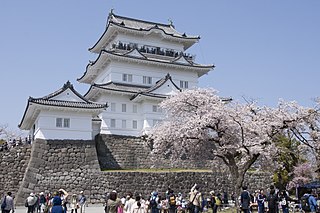 W
WThe third siege of Odawara occurred in 1590, and was the primary action in Toyotomi Hideyoshi's campaign to eliminate the Hōjō clan as a threat to his power. The months leading up to it saw hasty but major improvements in the defense of the castle, as Hideyoshi's intentions became clear. Thus, despite the overwhelming force brought to bear by Hideyoshi, the siege saw little actual fighting.
 W
WThe siege of Osaka was a series of battles undertaken by the Tokugawa shogunate against the Toyotomi clan, and ending in that clan's destruction. Divided into two stages, and lasting from 1614 to 1615, the siege put an end to the last major armed opposition to the shogunate's establishment. The end of the conflict is sometimes called the Genna Armistice , because the era name was changed from Keichō to Genna immediately following the siege.
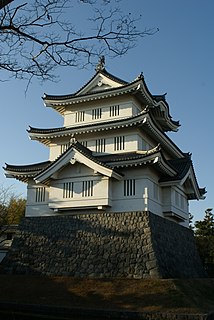 W
WThe 1590 Siege of Oshi was one of many battles in Toyotomi Hideyoshi's campaigns against the Hōjō clan during Japan's Sengoku period.
 W
WThe Battle of Beijing, or historically the Relief of Peking, was the battle fought on 14–15 August 1900 in Beijing, in which the Eight-Nation Alliance, led by the British, relieved the siege of the Beijing Legation Quarter during the Boxer Rebellion. From 20 June 1900, Boxers and Imperial Chinese Army troops had besieged foreign diplomats, citizens and soldiers within the legations of Austria-Hungary, Belgium, Britain, France, Italy, Germany, Japan, Netherlands, Russia, Spain and the United States.
 W
WThe Siege of Port Arthur was the longest and most violent land battle of the Russo-Japanese War.
 W
WThe Rokugō rebellion was a last stand of over 1,000 rōnin in 1603, who had been samurai in service of Onodera Yoshimichi until his defeat and exile by the Tokugawa shogunate's followers in 1601. Refusing to submit to the new ruler of Yoshimichi's former lands, Satake Yoshinobu, the rōnin launched an unsuccessful rebellion at Rokugō in "a final suicidal gesture" for their old master Yoshimichi, to whom they remained loyal.
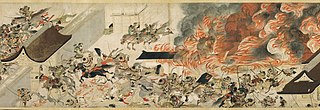 W
WThe Siege of the Sanjō Palace was the primary battle of the Heiji Rebellion. In early January 1160, after Taira no Kiyomori left Kyoto on a family pilgrimage, Fujiwara no Nobuyori and Minamoto no Yoshitomo saw an opportunity to effect changes they sought in the government. With a force of roughly five hundred men, they attacked in the night, kidnapped former emperor Emperor Go-Shirakawa, and set fire to the palace. They also abducted and imprisoned the then current emperor, Emperor Nijō, who supported their enemies, the Taira clan and Fujiwara no Michinori.
 W
WThe Shimabara Rebellion , also known as the Shimabara-Amakusa Rebellion or Shimabara-Amakusa Ikki (島原・天草一揆), was an uprising that occurred in the Shimabara Domain of the Tokugawa Shogunate in Japan from 17 December 1637 to 15 April 1638.
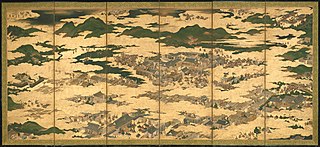 W
WThe siege of the Shirakawa-den (白河殿夜討) was the central event of the Hōgen Rebellion, a succession dispute which broke out after the death of the cloistered Emperor Toba. The conflict grew to involve the Fujiwara, Minamoto, and Taira clans, all major powers of the period.
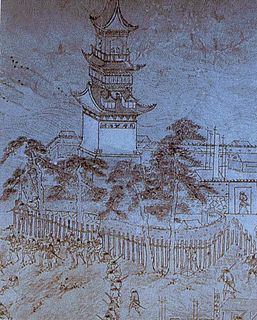 W
WThe Siege of Suncheon was an unsuccessful Korean and Chinese Allied Forces attempt to capture Suncheon Japanese Castle late in the Japanese invasions of Korea (1592–1598).
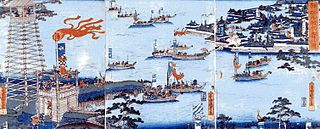 W
WIn the 1582 Siege of Takamatsu , Toyotomi Hideyoshi laid siege to Takamatsu Castle, which was controlled by the Mōri clan. He diverted a nearby river with dikes to surround and flood the castle. He also constructed towers on barges from which his gunmen could keep up a constant rate of fire and be unhindered themselves by the flooding.
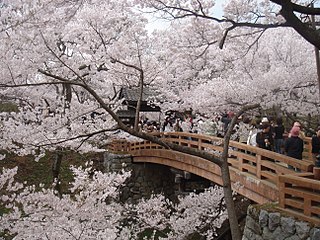 W
WThe 1545 siege of Takatō castle marked the first time Takatō had been besieged. Takeda Shingen, continuing his sweep through the Ima Valley of Shinano Province, seeking to take control of the entire province, defeated Takatō Yoritsugu, the castellan. Takatō had relied on support from his allies, Ogasawara Nagatoki and Tozawa Yorichika, who failed to aid in his defense.
 W
WThe 1600 siege of Tanabe was one of a number of battles which took place in parallel to the more influential series of battles known as the Sekigahara Campaign which led to the unification of Japan under Tokugawa Ieyasu.
 W
WThe sieges of Toishi castle took place during Takeda Shingen's campaign to take over Shinano Province. His army, led by Sanada Yukitaka, began sieging the castle in 1550. The defending lord, Murakami Yoshikiyo, held out until the following year, but his garrison suffered over 1000 casualties, and was ultimately forced to surrender.
 W
WThe Siege of Ulsan was an unsuccessful Ming-Joseon attempt to capture Ulsan from the Japanese. The siege lasted from 26 January to 19 February 1598.